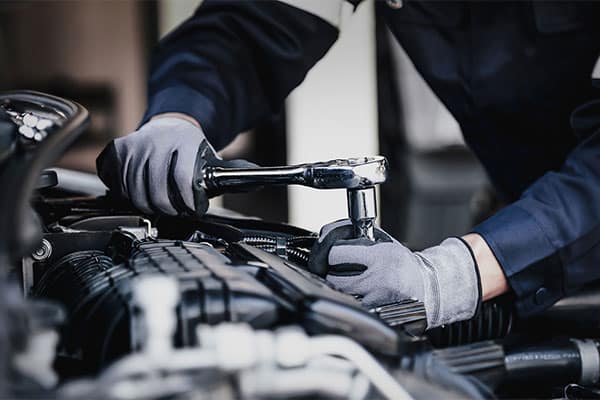All Categories
Featured
When it pertains to automobile maintenance, tires are often one of the most overlooked components, even though they play an important function in the security and effectiveness of your auto. Tire turning and placement are two essential services that aid ensure your tires put on equally, last longer, and proceed to do at their finest. Below's every little thing you need to know regarding tire rotation and placement and why they matter for your automobile.
What Is Tire Rotation? Tire rotation is the procedure of relocating the tires from one position to one more to ensure also wear across all four tires. The front and back tires of a lorry wear at various prices because of the weight circulation and the truth that the front tires manage both steering and stopping. By rotating the tires consistently, normally every 6,000 to 8,000 miles, you can cancel the wear and extend the life of your tires.
In a lot of vehicles, the tires will be revolved from front to back, and in some situations, side-to-side, relying on the tire kind and your vehicle's requirements. This guarantees that each tire bears an equivalent quantity of stress and anxiety and strain. Regular tire turnings also enhance vehicle handling and ride high quality, as well as add to far better fuel efficiency.
What Is Tire Alignment? Tire alignment refers to readjusting the angles of your automobile's wheels to ensure they are located properly according to the manufacturer's specifications. Correct placement guarantees that your tires are identical to each other and perpendicular to the ground, which assists enhance the overall handling, stability, and life-span of your tires.
There are three key facets of placement:
Camber: The tilt of the wheels when checked out from the front. If the wheels lean inward or outward, it can create unequal tire wear. Caster: The angle of the guiding axis when viewed from the side. Appropriate wheel alignment guarantees secure guiding and better vehicle control. Toe: The angle at which the tires direct inward or exterior when watched from above. Inaccurate toe alignment can cause tires to put on erratically and impact handling. Misalignment can occur as a result of aspects like hitting craters, curbs, or driving over rough surface, and also routine driving gradually can gradually cause misalignment. Getting a placement check every 1-2 years or when you notice handling issues is crucial for ideal tire performance.
Why Are Tire Rotation and Alignment Important? Maximized Tire Life:. Tire turning makes sure even wear throughout all 4 tires, protecting against premature tire replacement. Misaligned tires put on erratically, which can result in the requirement for more frequent tire substitutes. Both tire rotation and alignment increase the lifespan of your tires, conserving you cash in the long run.
Improved Security:. Correct alignment helps keep your automobile tracking straight, improving stability and handling. Misaligned tires can result in pulling, that makes it tougher to manage your automobile, particularly at broadband or in emergency circumstances. Tire turning likewise ensures your lorry's handling stays constant, boosting your capability to quit rapidly and preserve control.
Much Better Gas Efficiency:. When your tires are correctly aligned, they experience less moving resistance, implying your engine doesn't need to function as tough to relocate the automobile. This minimizes gas usage and enhances gas mileage. Misalignment can trigger your tires to drag, bring about bad gas efficiency.
Smoother Experience:. Misaligned or unevenly worn tires can create resonances in the steering wheel or vehicle body, which can be unpleasant while driving. Normal tire turning and alignment can give a smoother and quieter adventure, reducing unneeded noise and vibrations.
Indications You Need Tire Turning or Placement. It is essential to be mindful of warning indications that your tires may need interest. Maintain an eye out for:
Irregular Tire Wear: If you discover that a person tire is more worn than others, it might be an indication that it's time for a rotation or placement. Guiding Drawing away: If your vehicle draws to one side, particularly when you're driving right, it could show imbalance. Vibrations or Uncommon Sounds: If your guiding wheel shakes or you listen to a buzzing or whimpering noise, your positioning might be off. Screeching Tires: A shrill squeal can signal misalignment or that your tires are worn unevenly. If you discover any one of these indicators, it's a good idea to have your lorry examined asap to protect against additional damage to your tires or suspension system.
Exactly How Frequently Should You Rotate and Straighten Your Tires? Tire turning is normally advised every 6,000 to 8,000 miles or every six months, depending upon your automobile's handbook and driving conditions. It's also a great idea to revolve your tires during oil changes to make certain they get the attention they require.
For positioning, a lot of professionals recommend having your tires lined up yearly or if you notice any handling concerns. If you've recently hit a hole, visual, or another challenge, it's a good idea to have your alignment examined quicker to avoid unequal tire wear.

Verdict: Maintain Your Tires for Long Life and Safety. Tire turning and alignment are straightforward yet critical aspects of car upkeep that add to longer tire life, boosted security, and better fuel effectiveness. By following the recommended solution periods for tire turning and placement, you can ensure your tires remain in leading condition, providing a smoother and much safer driving experience. Normal maintenance aids you avoid unforeseen tire wear, costly repair work, and prospective accidents, making it a smart investment for your vehicle's total performance.
Latest Posts
Grab Exclusive Auto Repair Offers in Chicago at Montclare Auto Repair
Explore WyHy FCU – Top Benefits for Your Future
Discover Your Financial Partner at WyHy – Essential Perks for Your Financial Success
More
Latest Posts
Grab Exclusive Auto Repair Offers in Chicago at Montclare Auto Repair
Explore WyHy FCU – Top Benefits for Your Future
Discover Your Financial Partner at WyHy – Essential Perks for Your Financial Success